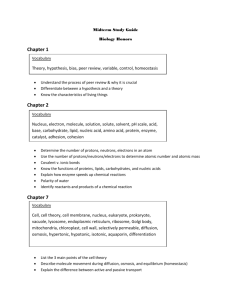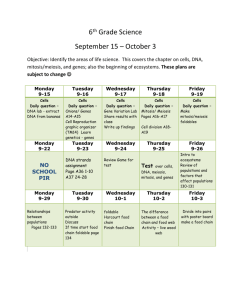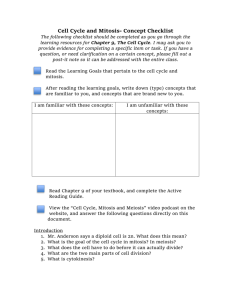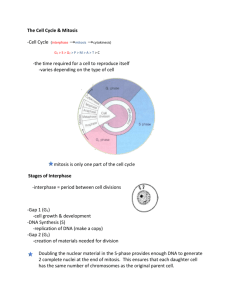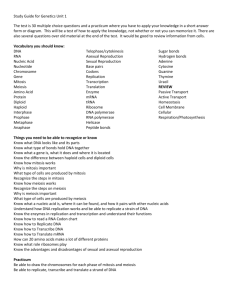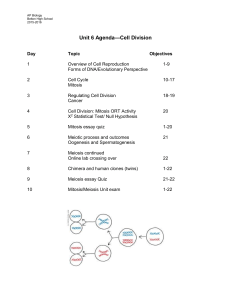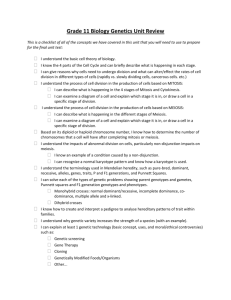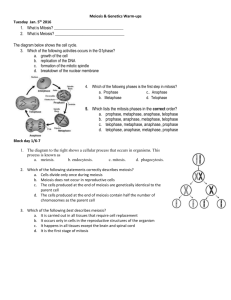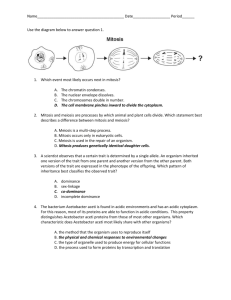File
advertisement
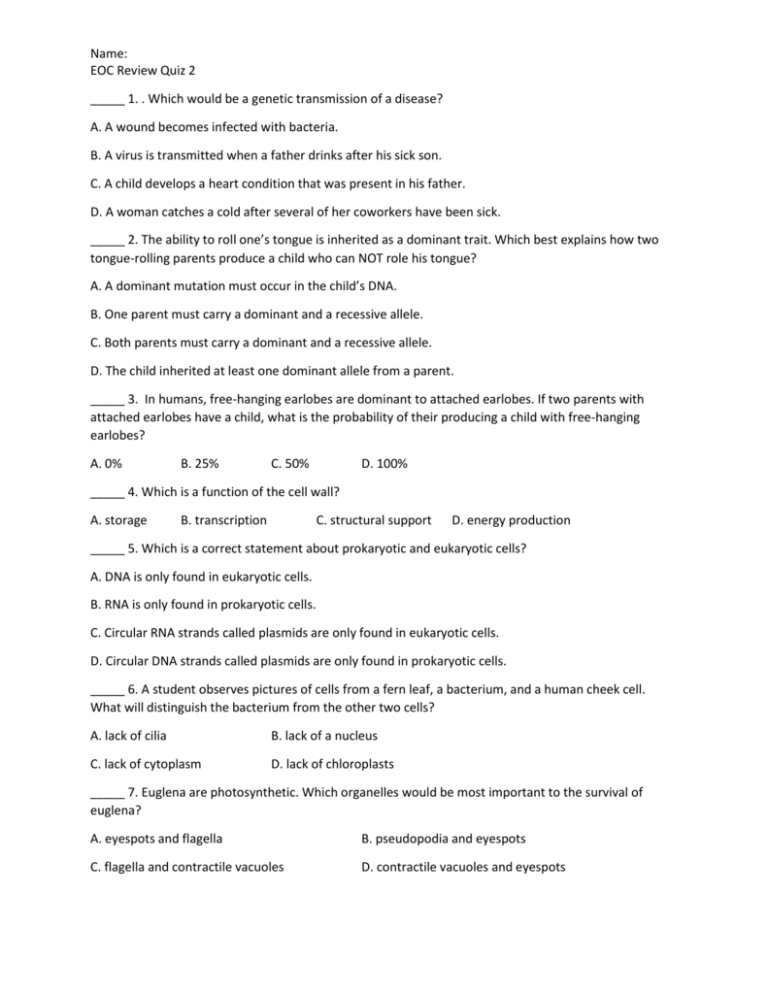
Name: EOC Review Quiz 2 _____ 1. . Which would be a genetic transmission of a disease? A. A wound becomes infected with bacteria. B. A virus is transmitted when a father drinks after his sick son. C. A child develops a heart condition that was present in his father. D. A woman catches a cold after several of her coworkers have been sick. _____ 2. The ability to roll one’s tongue is inherited as a dominant trait. Which best explains how two tongue-rolling parents produce a child who can NOT role his tongue? A. A dominant mutation must occur in the child’s DNA. B. One parent must carry a dominant and a recessive allele. C. Both parents must carry a dominant and a recessive allele. D. The child inherited at least one dominant allele from a parent. _____ 3. In humans, free-hanging earlobes are dominant to attached earlobes. If two parents with attached earlobes have a child, what is the probability of their producing a child with free-hanging earlobes? A. 0% B. 25% C. 50% D. 100% _____ 4. Which is a function of the cell wall? A. storage B. transcription C. structural support D. energy production _____ 5. Which is a correct statement about prokaryotic and eukaryotic cells? A. DNA is only found in eukaryotic cells. B. RNA is only found in prokaryotic cells. C. Circular RNA strands called plasmids are only found in eukaryotic cells. D. Circular DNA strands called plasmids are only found in prokaryotic cells. _____ 6. A student observes pictures of cells from a fern leaf, a bacterium, and a human cheek cell. What will distinguish the bacterium from the other two cells? A. lack of cilia B. lack of a nucleus C. lack of cytoplasm D. lack of chloroplasts _____ 7. Euglena are photosynthetic. Which organelles would be most important to the survival of euglena? A. eyespots and flagella B. pseudopodia and eyespots C. flagella and contractile vacuoles D. contractile vacuoles and eyespots Name: EOC Review Quiz 2 _____ 8. Which would identify an unknown cell as a liver cell as opposed to a pancreas cell? A. A liver cell has different DNA from a pancreas cell. B. Different segments of DNA are active in the two cells. C. The location of the cell in the organism determines its function. D. Hormones which are present determine whether it is a liver cell or a pancreas cell. _____ 9. Which action would be most helpful in maintaining homeostasis? A. running a race B. eating an apple C. walking up steps D. sweating on a hot day _____ 10. To enter and leave the cell, sodium requires an energy-intensive pump. Which describes the process of sodium moving into and out of the cell? A. osmosis B. diffusion C. active transport D. passive transport _____ 11. Some cells convert glucose to carbon dioxide and water. What is the purpose of this process in cells? A. to aid in reproduction B. to dispose of waste glucose C. to make food by photosynthesis D. to change energy to a form that the cell can use _____ 12. The diagrams below show the various stages of the cell cycle. Which correctly lists the stages of the cell cycle in order? A. 2, 1, 5, 3, 4 B. 4, 2, 5, 1, 3 C. 2, 4, 5, 1, 3 D. 4, 2, 1, 5, 3 _____ 13. Which factor least affects the rate of photosynthesis? A. intensity of light B. availability of water C. amount of oxygen present D. environmental temperature _____ 14. A potential cancer treatment targets cells during mitosis. It works most effectively when the chromosomes are aligned at the center of the cell. During which phase of mitosis does this occur? A. anaphase B. metaphase C. prophase D. telophase Name: EOC Review Quiz 2 _____ 15. What is a difference between cells produced through mitosis and those produced through meiosis? A. Mitosis produces cells with larger genes than those produced through meiosis. B. Mitosis produces cells that lack genes, and those produced through meiosis have genes. C. Mitosis produces cells with genes that are more vulnerable to disease than those produced through meiosis. D. Mitosis produces genetically identical cells, and those produced through meiosis have random combinations of parents’ genes. _____ 16. Which process occurs during meiosis, but does NOT occur during mitosis? A. crossing over B. gene mutation C. nuclear division D. replication of DNA _____ 17. How many chromosomes are in a human sperm cell? A. 12 B. 23 C. 46 D. 92 _____ 18. What is demonstrated when a red flower is crossed with a white flower to produce pink flowers? A. complete dominance B. incomplete dominance C. complete recessiveness D. incomplete recessiveness _____ 19. The pedigree below represents a sex–linked trait in four generations of a family. Which best represents the phenotype of Individual II–6? A. an affected male B. an affected female C. a normal male, carrier D. a normal female, carrier Name: EOC Review Quiz 2 _____ 20. Red-green colorblindness is more common in men than in women. Which best explains this fact? A. The allele for colorblindness is dominant in men and recessive in women. B. Men only need one allele for colorblindness, while women need two alleles. C. The allele for colorblindness is carried on the Y-chromosome so only men get it. D. Women have other allele pairs which cover the colorblind allele, while men do not. Words you should know matching quiz: 1. Metaphase _____ 2. Microscope _____ 3. Monosaccharide _____ 4. Nondisjunction _____ 5. non-flowering plants _____ 6. non-native species _____ 7. nonvascular plants _____ 8. omnivore _____ 9. ovaries _____ 10. pathogen _____ 11. permeable _____ 12. phagocytes _____ 13. photosynthesis _____ 14. phototaxis _____ 15. phylogenetic tree _____ 16. plasma membrane _____ 17. predisposed _____ 18. prokaryote _____ 19. pseudopod _____ 20. sexual reproduction _____ a. failure of sister chromatids or chromosomes to separate during meiosis b. meat and plant eater c. the moving of an organism in response to light d. type of cell with no nucleus e. false foot adaptation of some unicellular organisms f. single sugar, i.e. glucose or fructose g. ovum producing organ h. gymnosperms i. anything that can produce a disease j. an instrument used to see objects too small to be seen with the naked eye k. shows the evolutionary relationships between organisms over time l. allowing liquid or gases to pass through m. plants that do not have xylem or phloem n. separates the interior of a cell from the exterior of a cell o. make something inclined or more possible to happen p. invasive species q. phase of mitosis when chromosomes line up in the center of the cell r. reproduction with two parents s. process by which glucose is produced from sunlight and water t. cells in the body that ingest foreign invaders


